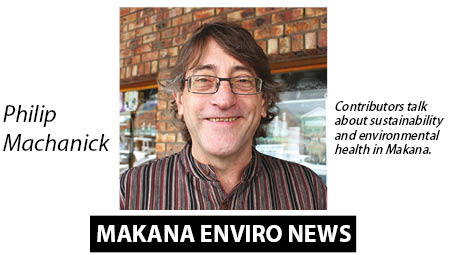Compiled by Philip Machanick
Two events make it timely to look at the future of the electric car. The first is the British government’s 25 July 2017 announcement that sales of new fossil-fuelled cars would end in 2040, following a similar commitment from France. The second is the official launch on 28 July of Tesla’s first mass-market car, the Model 3.
Model 3 production is ramping up. Its base price of $35 000 (about R450 000) is not cheap but is comparable with an entry-level BMW. Over 400 000 people put down a $1 000 deposit to pre-order, with a queue more than a year long.
The general idea
Until problems of range and recharge time are sorted out well enough for long trips and out-of-the way adventures, the electric car’s use case overlaps too much with active and public transport. For less than 10km, a bicycle is pretty efficient. Less than 2km, walking is good. Public transport is far preferable to cars in the urban environment – though South Africa’s poor urban architecture makes that a challenge.
Another big issue is the high cost of replacing batteries – in an old car, a significant fraction of its value.
Even so, electric cars have great pluses.
As with electrifying any form of transport, you shift the pollution solution from many vehicles to a few power plants. Many cars plugged in opens up the option of ‘Vehicle2Grid’ – car batteries used as a top-up during short-term peaks of demand, one of the harder problems for power grids.
An electric motor is far more efficient than an internal combustion engine, more compact for like power and has great torque from zero revs. The “refuel” cost is far lower than for petrol or diesel for comparable performance. Based on figures that I found on Tesla’s discussion forum, at the price I pay for electricity, Model 3 recharging would cost less than a third of my Honda Civic petrol bill.
The Tesla take
Tesla CEO Elon Musk is noteworthy for his unusually long view. He sees climate change as a threat to habitability of our planet so he is tackling it from two angles: clean energy and space travel. His SpaceX Mars project is a kind of insurance against losing our home planet. I am not convinced of Mars: surface pressure is 1% that of Earth, the atmosphere is mostly carbon dioxide and temperatures are far too low. Venus has temperatures and pressures within liveable range 50km–60km above ground, leaving only unbreathable atmosphere as a problem.
I prefer the home planet part of the Musk vision. Aside from electric cars, he has invested in solar power and home-scale batteries.
Musk took over Tesla when there were many other struggling electric car start-ups. So what is his formula for success? The first is no compromise: despite any inconveniences such as recharge time, his cars aim to be best in class, rather than an electric motor stuck into a mediocre design. His starting point was aspirational vehicles that were too expensive for the mass market but attracted enthusiast attention.
Model 3, assuming production scales as planned, makes electric cars much more accessible – while still desirable to the enthusiast. Early Model 3 reviews have been enthusiastic, with a Motor Trend article describing it as making an Alfa Romeo Giulia feel “like a wet sponge by comparison”.
A big part of the Tesla ecosystem is Superchargers convenient distances apart to allow long trips with 30-minute charging stops. That is longer than a refuel but tolerable. Scaling up the network for hundreds of thousands of cars is yet another challenge.
The road ahead
A measure of Musk’s achievement is how companies like Daimler and Volvo look up to him.
We are still a way from serious availability of electric cars in this country but Musk has hit the on switch for an interesting revamp of a whole industry. Getting to Mars? Easy, by comparison.
Meanwhile, I use my car as little as possible and use low-cost low-emission transport as much as possible: I walk and cycle.
The bigger picture
The 2017 hurricane season illustrates why we need to take climate change seriously. There always have been hurricanes – including big ones. What is unprecedented is the number that intensified so rapidly. Ninety percent of the extra energy from the human-enhanced greenhouse effect goes into the oceans and warm oceans are a major factor in intensifying tropical storms. This is just the start – serious climate change will be far worse. Whatever Musk’s aspirations, we don’t have a spare planet.
Find us Online: www.grocotts.co.za/category/outside/enviro-news
Contacts for Makana Enviro-News
Nikki Köhly: n.kohly@ru.ac.za, 046 603 7205 | Tim Bull: timothybull05@aol.com, 076 289 5122 | Jenny Gon: j-gon@intekom.co.za, 046 622 5822 | Nick James: nickjames@intekom.co.za, 082 575 9781 | Philip Machanick: p.machanick@ru.ac.za, 046 603 8635.


